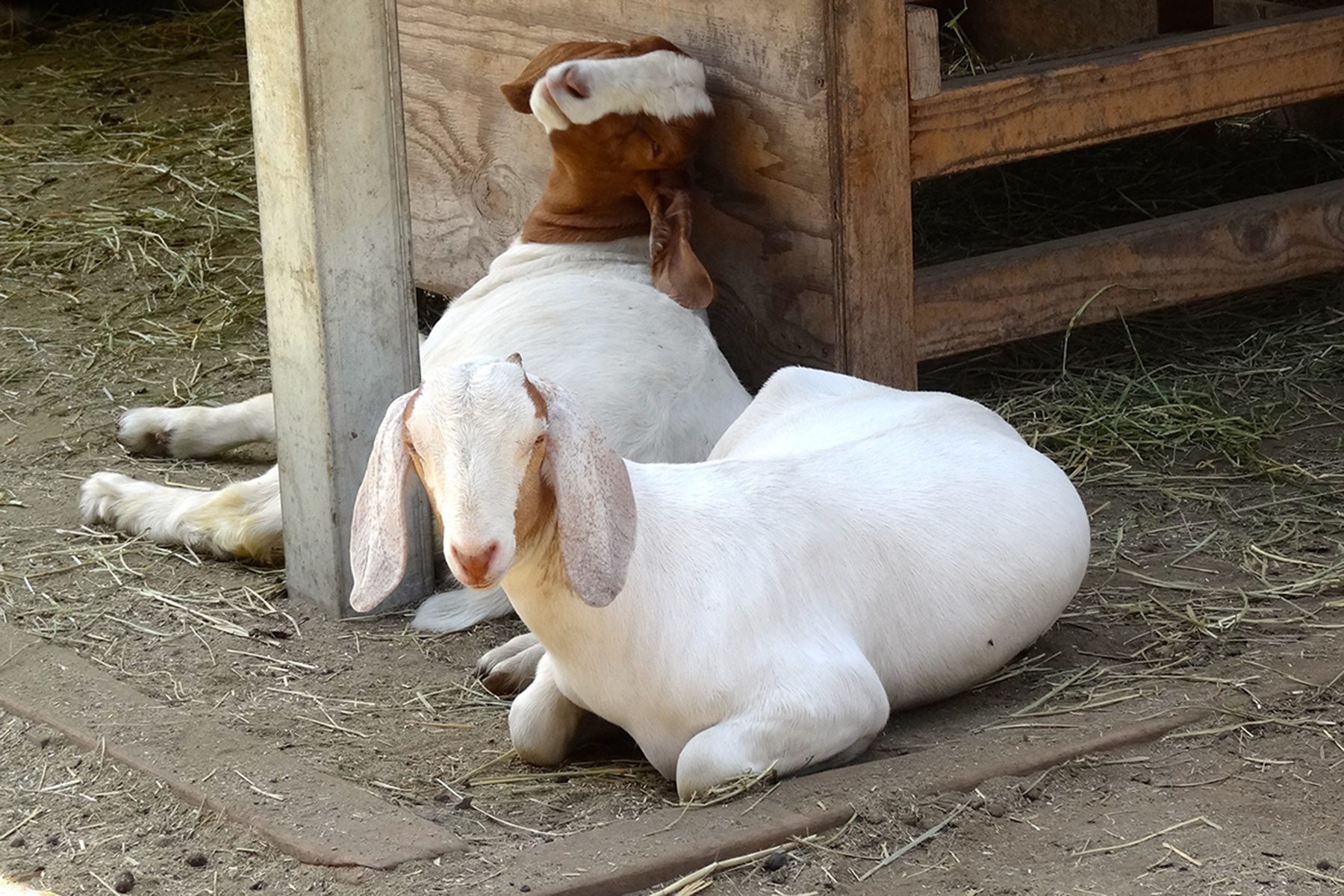Farming

Pregnant ewes and does require more nutrients and care when compared with open animals. It is important to ensure pregnant animals have an adequate supply of energy, protein, and minerals. Producers also need to consider feed costs, availability, feed storage, palatability (feed acceptance by an animal), and nutrient content of feed as they develop a feeding strategy.
Feeding pregnant ewes or does should be carried out with caution to avoid overfeeding. Overfeeding may lead to metabolic disorders, reproductive failures, and higher feed costs for producers. In addition, grouping does or ewes by pregnancy status will make managing nutritional resources and meeting feeding requirements easier.
Small ruminants are evaluated on a body condition scoring system ranging from 1-5, with one being thin and 5 exhibiting a high degree of finish. For optimum performance, ewes and does should have a body condition score (BCS) between 2.5 and 3.5 at breeding and a BCS of 3 to 3.5 prior to kidding. Ewes or does that are overweight may experience lambing complications resulting from delivering overweight babies. Thin ewes and does have a higher risk of giving birth to underweight and weak babies. Further details about body condition scoring can be found in Herd Health Management – Dairy Goats and Sheep, an excerpt of ANR-2457.
Common Winter Diseases for Sheep and Goats
Pneumonia
Pneumonia is primarily caused by bacteria such as Pasteurella multocida, Mannheimia haemolytica, or Arcanobacterium pyogenes. This disease may occur in a herd due to poor barn ventilation, transportation stress, and a sudden change in diet. Lambs and kids are the most vulnerable.
Symptoms
- Diarrhea (scours) is sometimes associated with pneumonia
- Fever
- Moist, painful cough
- Dyspnea (difficulty in breathing) and anorexia (loss of appetite)
Prevention
- Vaccinate adults and young stock with Pasteurella (Pneumonia) vaccine.
- Administer boosters every year to vaccinated animals.
- Sick animals can be treated with an antibiotic, such as penicillin, ampicillin, and tetracycline (contact a veterinary for recommendations).
Enterotoxaemia
Enterotoxaemia or overeating disease is caused by the bacteria Clostridium perfringens, types C and D. This disease occurs when sheep and goats experience a sudden change of diet, stress, or weak immune system while recovering from another disease.
Symptoms
- Loss of appetite
- Abdominal discomfort, shown by kicking at the belly and arching the back
- Profuse diarrhea (watery consistency with or without blood)
- Sudden death occurs only minutes after a lamb, or a kid, shows signs of central nervous system alteration
Prevention
- A gradual introduction of grain to the winter diet over a week or two will help to prevent enterotoxaemia.
- Pregnant does and ewes should be vaccinated against Clostridium perfringens types C, D, and tetani during the fourth month of gestation. This vaccine is commonly referred to as the “clostridial CD/T” vaccine.
Other Contagious Diseases
Other contagious diseases that may be prevalent during the winter are
- Pinkeye (keratoconjunctivitis)
- Sore-mouth (contagious ecthyma)
- Caseous lymphadenitis (CL)
- Lameness winter diseases: mastitis, and
- Gastrointestinal parasites
Tips for a Successful Winter Lambing or Kidding Preparation
- Check herd/flock regularly and observe behavioral changes, such as isolation from the flock or herd.
- Watch for signs of parturition, such as vaginal swelling, vaginal discharge, and milk letdown.
- Assist and intervene in case of dystocia (difficult delivery).
- Check to see if ewes or does are allowing newborns to nurse and caring for them after delivery.
- Check for placental expulsion that can be retained up to 12 hours post-partum. In case of placental retention, give prostaglandin injection to induce expulsion.
Newborn Care
- Disinfect umbilical cord or naval cord within 12 hours after birth by dipping in iodine solution
- Ensure newborns are receiving enough colostrum during the first 12 hours after birth.
- Provide artificial colostrum and milk replacer as an alternative if dam does not provide adequate colostrum or milk.
In case of bottle feeding, bottle and nipples must be sterilized to prevent bacterial gastrointestinal infections.
Post-Partum Dam Care
- Provide adequate nutrition to lactating ewes and does.
- Keep ewes and does in a clean and well ventilated facility with dry bedding to avoid infectious diseases (pneumonia, mastitis, lameness, and other infections).
Other Winter Management Strategies
- As temperatures drop, ruminants will eat more. Feed will have to be adjusted to make up for the loss in energy.
- Provide proper housing that includes:
- Three-walled structures
- Block from wind and cold
- Proper ventilation
- Use haystacks, wind fences, and shelter belts.
Developing a nutritional and health management plan for pregnant ewes or does before winter can help to reduce feed costs, ensure availability of feed after lambing or kidding, and prevent winter diseases and health challenges associated with cold weather stress.
Visit www.aces.edu for more information about goat and sheep production management.

